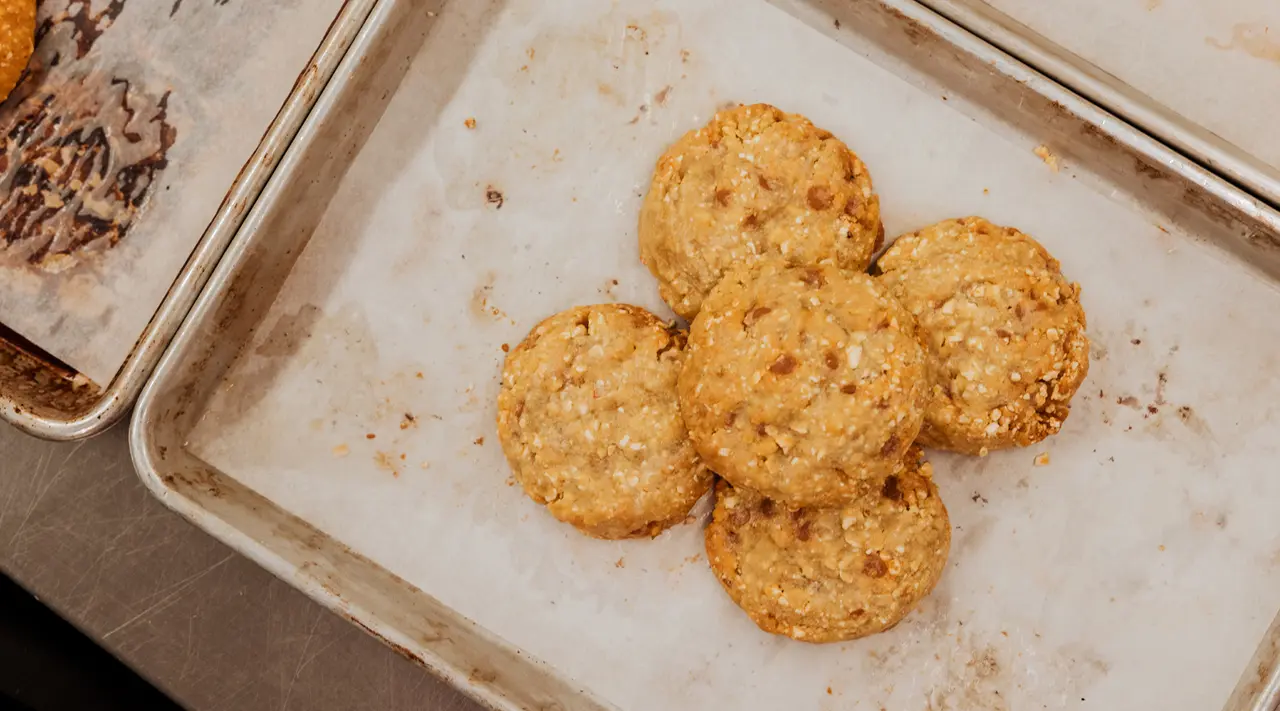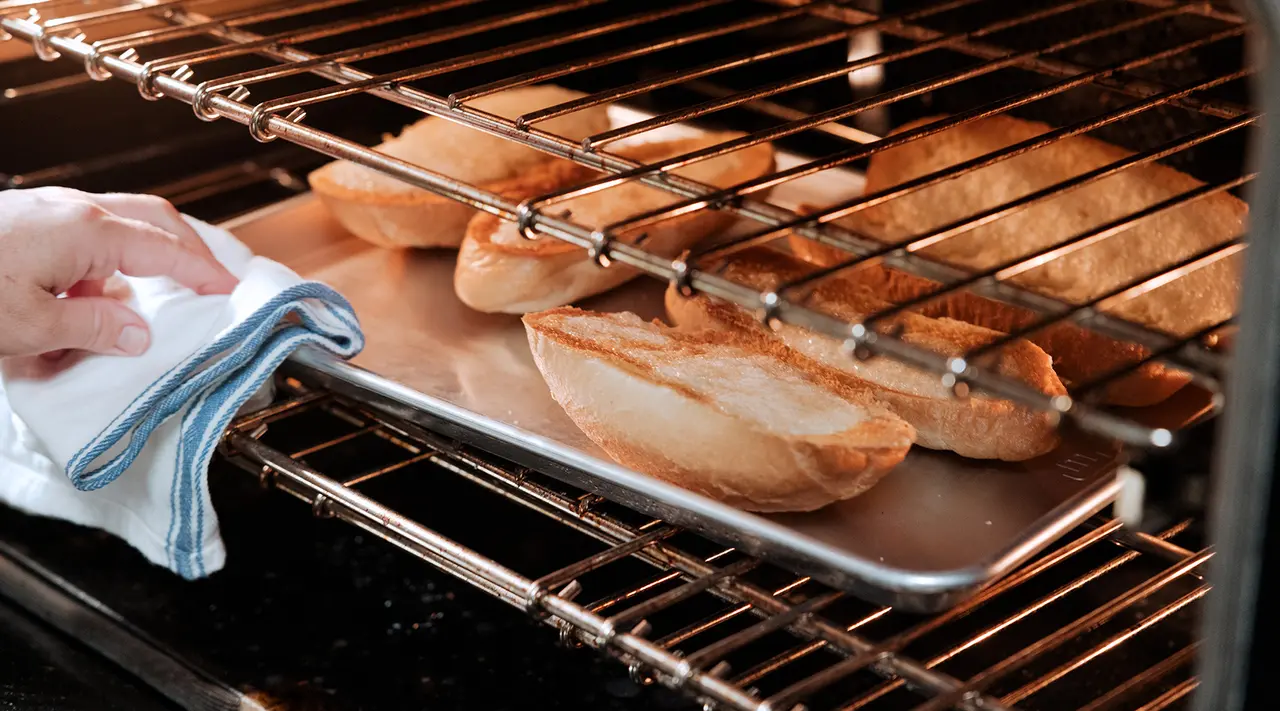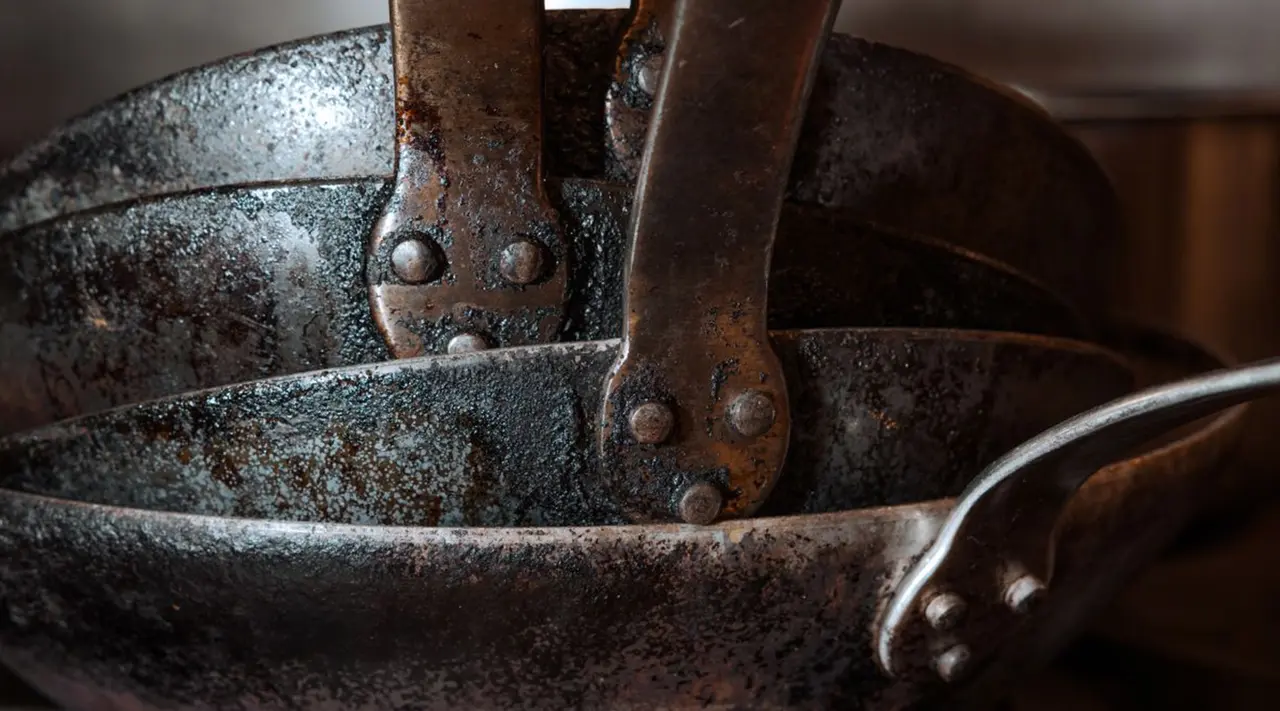Sheet pans are one of the most-used pieces of kitchen cookware, perfect for baking cookies, roasting one-pan meals, sitting under pies to catch spills, storing homemade pasta, and using as a makeshift tray to efficiently transport ingredients from fridge to counter. You can even use a sheet pan as a lid to cover large pots or baking dishes.
With so much potential, it’s likely that your sheet pan could use a little extra cleaning care. While some level of wear and tear is to be expected, if you make sheet pan cleaning a regular part of your cooking routine, your sheet pans will stay in their best shape and continue to help you make tasty food. Here’s how.
How to Clean Sheet Pans

Since sheet pans are typically in use more often than they aren't, there are a few different levels of mess you can expect, ranging from lightly used to badly burned.
For Light Messes
A simple soap and hot water wash will often do the trick for less serious messes, like residual oil leftover after roasting vegetables.
- Let the sheet pan cool before cleaning
- If there’s any food slightly stuck on the pan, then let it soak in hot water while you’re eating.
- Then, use hot, soapy water and your preferred cleaning sponge or brush to clean the pan.
- Rinse and let dry before storing; you can also dry your sheet pan with a towel to prevent water spots.
For Stuck-on Food Residue
For stubborn residue, like baked on cheese, you’ll want to use some elbow grease.
- Let the pan soak in hot water for up to 30 minutes.
- Use a scouring pad (avoid super abrasive steel wool) with hot water and soap to scrub away any stuck bits—you might also want to try a heavy duty soap that’s meant to tackle tough grease stains.
- Rinse and dry before storing.
For Burnt Food and Sticky Residue
For our aluminum Sheet Pans (do not do this on non stick!): when you’ve got food burnt to the pan, like a sticky, caramelized sugar—and you’ve already tried soaking per above—it’s probably time to break out the heavy duty cleaner like Bar Keeper’s Friend or our Stainless Steel Cleaner, or you can also try natural cleaning agents like baking soda and vinegar.
- Plug your sink, set the sheet pan inside, then mix ½ cup each baking soda and vinegar on the pan’s surface.
- Add enough water to fully submerge the pan, then stir and let the pan soak for an hour.
- Once it’s fully soaked, drain the sink and use soap and a scrubbing sponge or brush to finish cleaning the pan.
- Rinse well and dry before storing.
Tips for Daily Maintenance
It’s important to clean your sheet pan after every use to avoid residue sticking and melding onto the pan, creating a bigger mess for you to tackle later on.
Let your sheet pan cool slightly—or better yet, let it soak while you’re eating dinner—then use hot water, mild soap, and a soft brush or sponge to clean up. We don’t recommend putting your sheet pan in the dishwasher, as harsh detergents can damage and dull the metal.
To dry your sheet pan, use a clean cloth to wipe it mostly dry before letting it air dry. This prevents water spots and ensures your pan is completely dry before storing. Sheet pans stack quite well, but you might save more kitchen space by storing your sheet pans on their sides in a tall cupboard.
Additional Sheet Pan Care Tips

For most recipes, you can line your pan with parchment paper, silicone baking mats, or aluminum foil to prevent tough messes from happening in the first place. Silicone is especially nice since it’s durable and infinitely reusable.
Our Sheet Pan is designed to withstand temperatures up to 450F. If you’re often using your pan to roast at these high temperatures, you may notice more warping and staining. If that’s the case, then you might want to buy something more heavy duty, like our Carbon Steel Roasting Pan, which is designed to withstand high temperatures without warping.
Since our Sheet Pans are made from commercial grade 3004 Aluminum, they’re very durable, but you should still take care when storing them to avoid scratches and dents. If you have multiple sheet pans, you can nest them inside each other and rest them on their sides inside a cabinet. If you’re stacking them flat, be sure not to place anything else heavy or damaging on top.
How to Revive Old and Worn Sheet Pans

The fully enclosed and rolled rim on our Sheet Pans helps prevent warping while also acting as a levee against juices escaping. But if your sheet pan does warp, let it come to room temperature and it should snap back into place once it’s cooled.
If you notice rust spots forming on your pan, you can use vinegar or baking soda to remove the rust. To use vinegar, add enough distilled white vinegar to cover the spot, then let it soak for 5-10 minutes. Use a toothbrush or a coarse sponge to scrub away the rust, then wash with warm water and soap before drying and storing.
To use baking soda, sprinkle some over the rust spot, then add enough water to form a paste. Scrub with a brush or rough sponge, then wash and dry.
If the cleaning methods above aren’t restoring your sheet pan, it might be time to say goodbye. Warped and damaged pans won’t cook your food as well, so it’s better to start over with a new, undamaged sheet pan.
Ready to Cook?
When you keep your sheet pans clean and make cleaning a regular part of your cooking routine, they’ll always be at the ready for your next batch of cookies or a simple sheet pan dinner. Browse our selection of ½ and ¼ Sheet Pans, available in both standard and non stick finishes to fit all your baking needs.


























